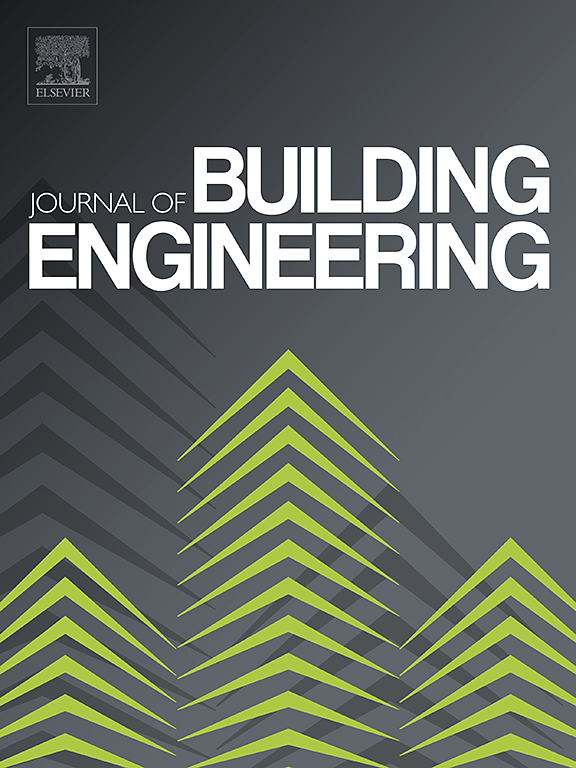Experimental and numerical study on progressive collapse resistance of novel fully assembled concrete beam-column connections
IF 6.7
2区 工程技术
Q1 CONSTRUCTION & BUILDING TECHNOLOGY
引用次数: 0
Abstract
In this paper, two novel fully assembled concrete beam-column connections are proposed, in which prefabricated beams are connected to the steel sleeves of restrained columns using bolted flanges (PC1) or bolt-cover plates (PC2). Pseudo-static tests were performed to evaluate the progressive collapse resistance of these dry connections. Additionally, the experiment results revealed that PC1 experienced out-of-plane instability failure after reaching the peak load, with its bearing capacity predominantly sustained by the flexural-compressive arch action (F-CAA). In contrast, PC2 underwent the F-CAA, transition, and catenary action (CA) stages, ultimately failing due to tensile fracture of the steel connector. The maximum chord rotation of PC1 and PC2 at the end of the test were 0.05 rad and 0.204 rad, respectively. Subsequently, finite element (FE) models were developed using ABAQUS, which agreed well with the test results. The mechanical behaviour of PC1 following the F-CAA stage was investigated through numerical simulation. It was found that PC1 exhibited a direct transition from the F-CAA stage to the CA stage, ultimately failing due to tensile fracture of the bolts, with a maximum chord rotation of 0.25 rad. Both the experimental and numerical results confirmed that PC1 and PC2 exhibit excellent deformation capacity. Finally, parametric analyses were conducted to investigate the effects of concrete strength, bolt diameter, web bolt distribution, and flange end widening modes on PC1 and PC2. The findings provide valuable insights and design guidance for optimising the connections and dynamic tests.
求助全文
约1分钟内获得全文
求助全文
来源期刊

Journal of building engineering
Engineering-Civil and Structural Engineering
CiteScore
10.00
自引率
12.50%
发文量
1901
审稿时长
35 days
期刊介绍:
The Journal of Building Engineering is an interdisciplinary journal that covers all aspects of science and technology concerned with the whole life cycle of the built environment; from the design phase through to construction, operation, performance, maintenance and its deterioration.
 求助内容:
求助内容: 应助结果提醒方式:
应助结果提醒方式:


